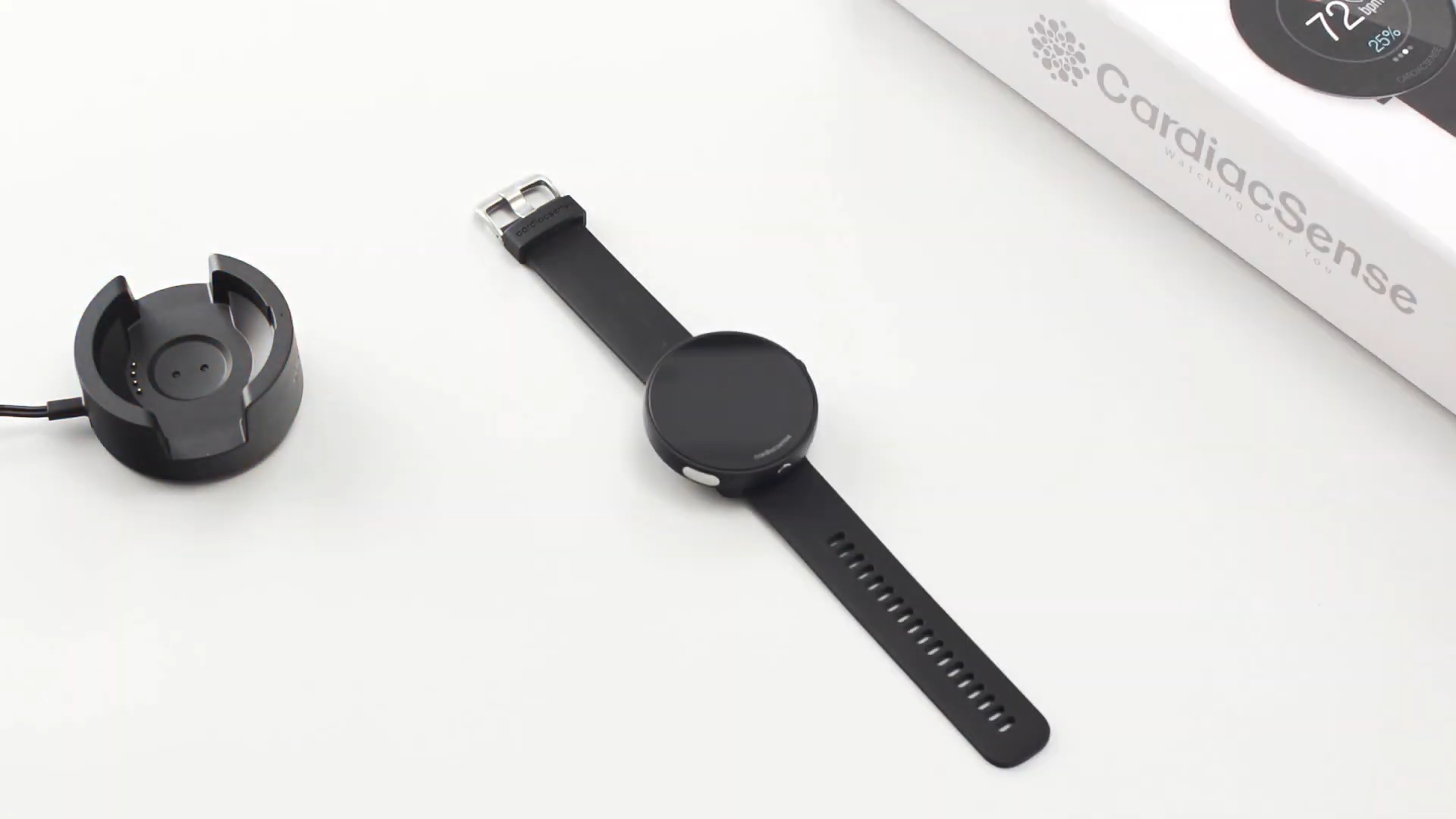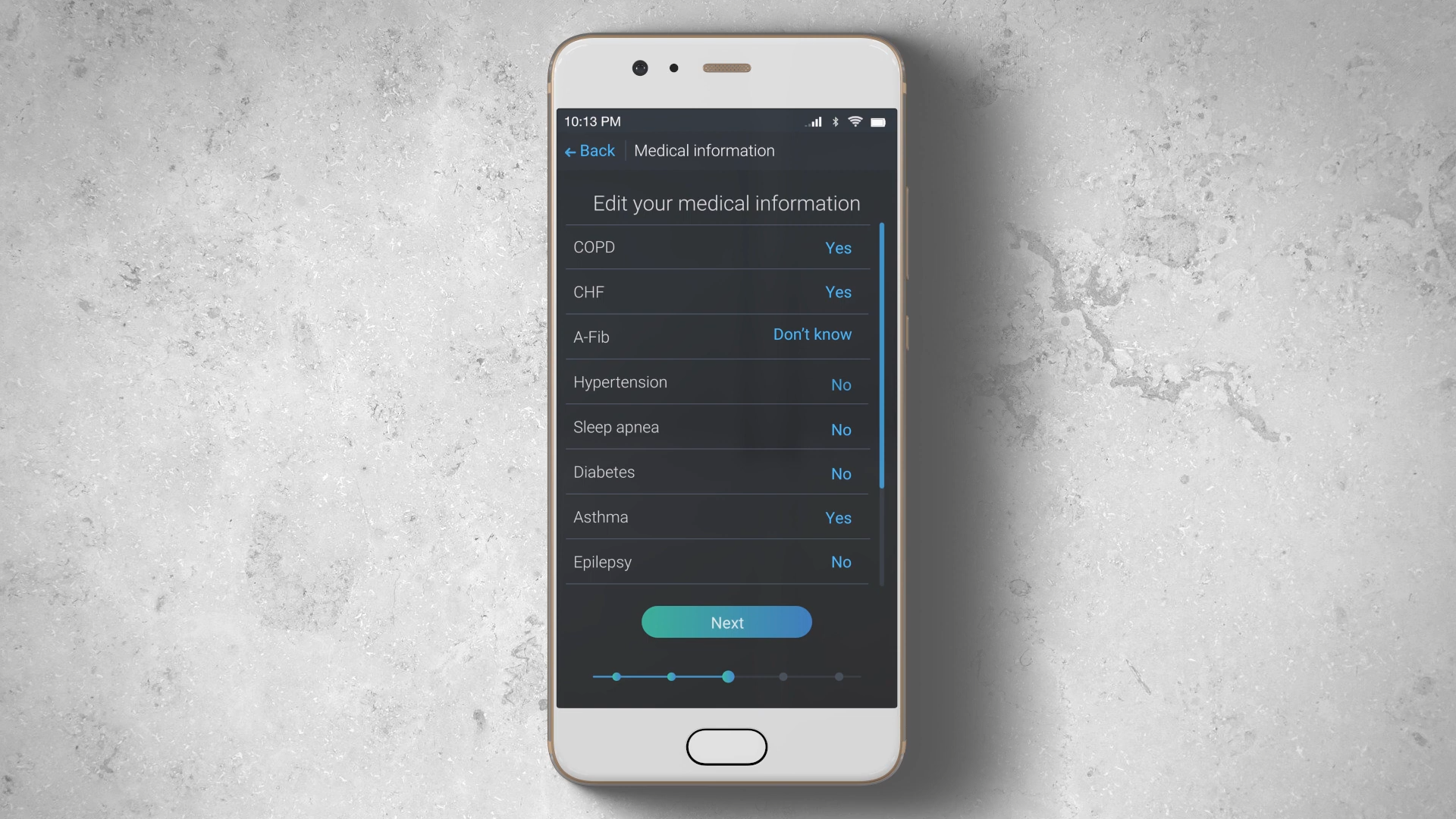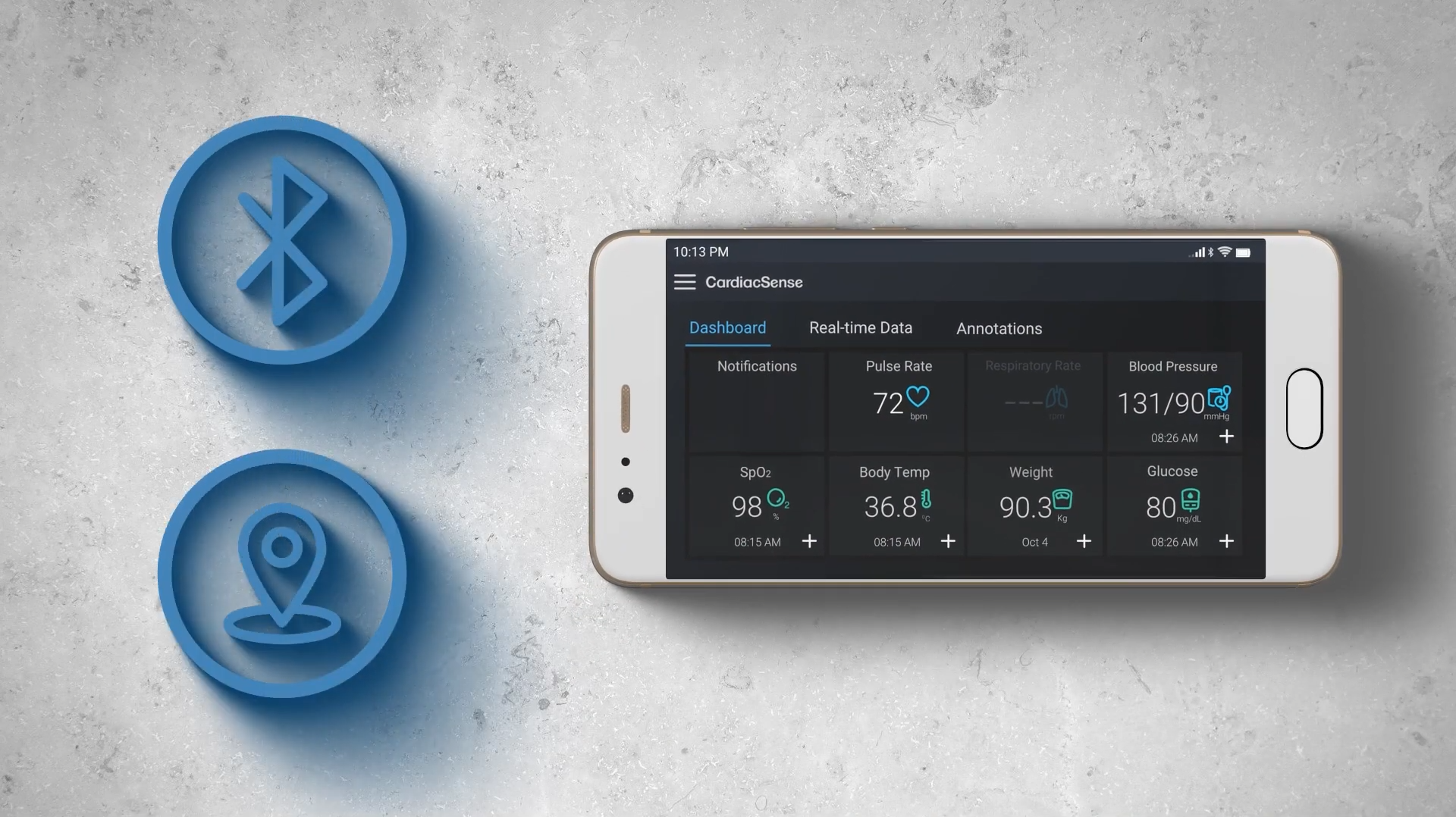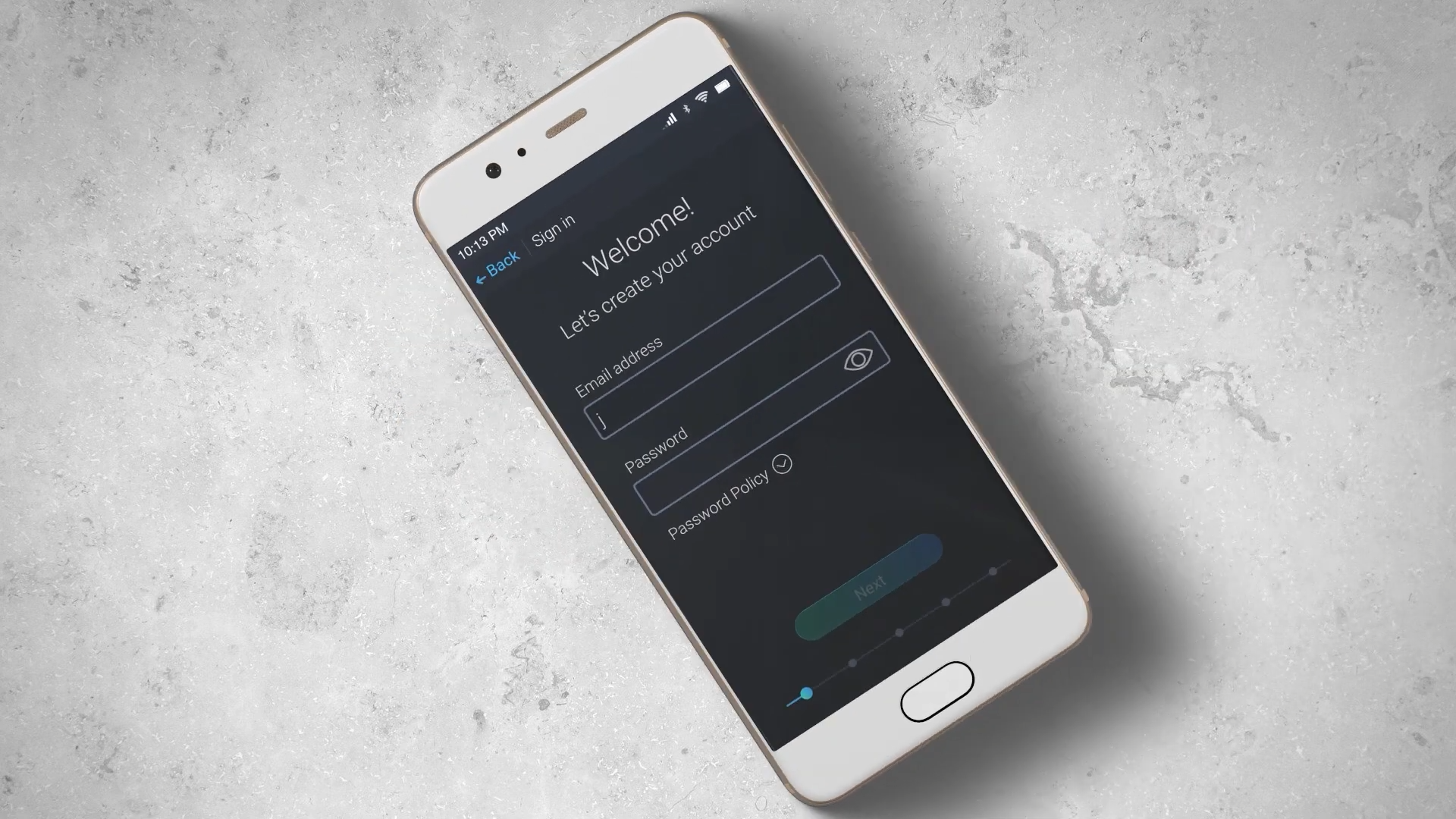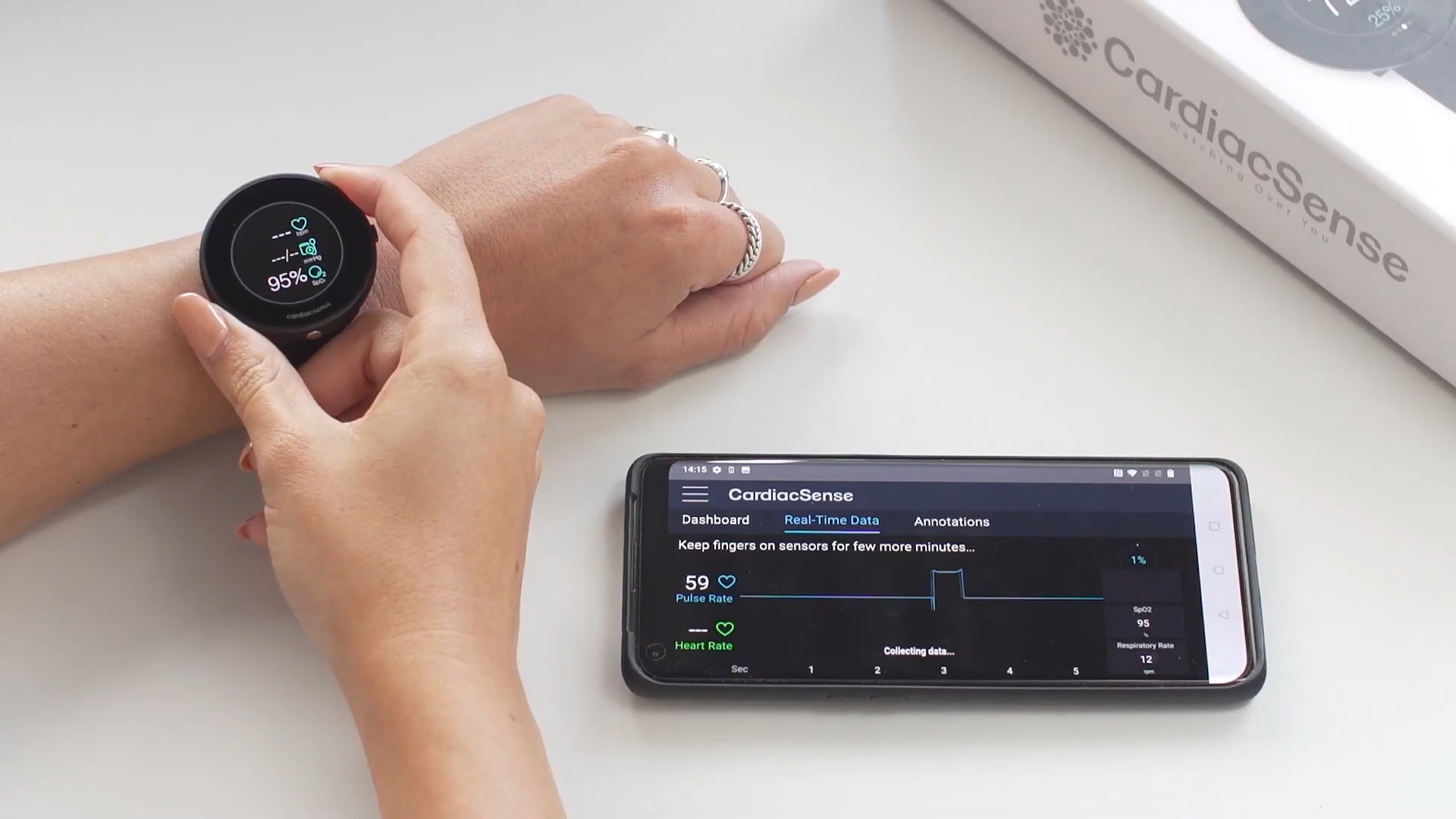Smart wearable that helps save lives
Using sensors, the smart wearable monitors a large number of clinical parameters. The data obtained helps doctors make a better diagnosis. In this way, the medical grade device saves time and costs. And lives.
Unprecedented ease of use: the patient can easily install the all-in-one device themselves
Non-invasive measurements (including blood pressure measurement without a cuff)
Customizable wearable with a designer look
Possibility of personal lifestyle coaching, in line with the wellbeing metrics trend
Better alternative to the 'smart plaster': no disposables and, therefore, lower costs
Unprecedented ease of use: the patient can easily install the all-in-one device themselves
Non-invasive measurements (including blood pressure measurement without a cuff)
Customizable wearable with a designer look
Possibility of personal lifestyle coaching, in line with the wellbeing metrics trend
Better alternative to the 'smart plaster': no disposables and, therefore, lower costs

How does CardiacSense work?
CardiacSense looks like a wristwatch and is worn by the patient as such. The smart system measures 24/7 and regularly connects to a connected smartphone or hub. This then shares all data with a secure platform that is accessible via an equally secure internet connection.
What can CardiacSense measure?
Electrocardiagram (ECG)
CardiacSense can generate an ECG strip with a simple push of a button. This information can be consulted immediately or even shared with the treating physician or health care provider via the cloud connection. CardiacSense has a CE mark for this application.Atrial fibrillation detection (AF)
Because CardiacSense measures continuously, it is ideal for detecting atrial fibrillation (AF). The watch notifies the user whenever an event is detected. There is also the option to forward (push-)notifications in collaboration with a doctor or healthcare provider, so that action can be taken quickly.Heart rate (HR) & heart rate variability (HRV)
CardiacSense is the only CE-marked device that measures heart rate while the wearer is in motion, providing highly accurate heart rate variability (HRV) values. Therefore, CardiacSense is essential to analyze sleep and mental stress in a very patient-friendly way.Respiratory rate (RR)
CardiacSense is the first wrist wearable device of its kind that provides long-term, real-time, continuous and non-invasive respiratory rate (RR) monitoring. Monitoring of the RR is essential to detect not only deterioration in chronic obstructive pulmonary disease (COPD), congestive heart failure (CHF), asthma and other chronic conditions, but also sleep apnea.Oxygen saturation (SpO2)
The medical smartwatch CardiacSense checks oxygen saturation when two fingers are placed on the sensors on the watch's bezel.
Atrial Fibrillation Monitor
When someone is diagnosed with Atrial Fibrillation (A-Fib) it means that their heartbeat is irregular or abnormal. Normally our heart beats at about 70 beats each minute (bpm) and these are rhythmic, like the drumbeat of a song.

Asymptomatic A-Fib
Sometimes we can avoid developing a serious disease or prevent worse symptoms from appearing by catching the signals early. Continuous monitoring can help healthcare professionals check their patient’s health status more frequently and catch conditions that they may not even be aware of.
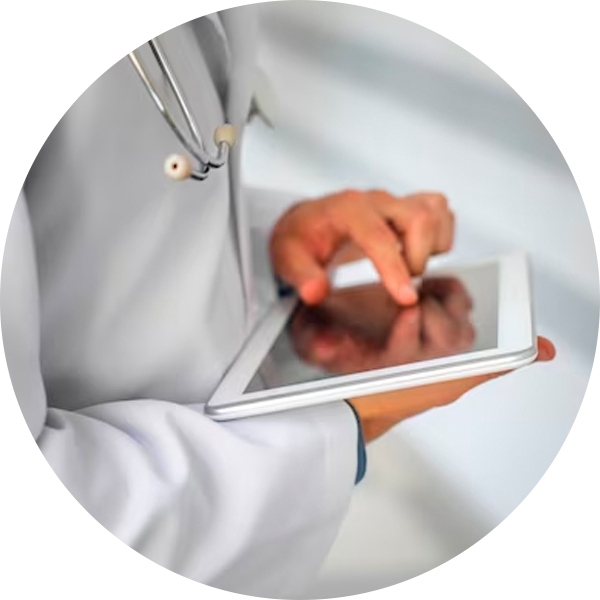
Remote Patient Monitoring
Ambulatory monitoring can follow your health status without the restrictions of a clinical environment. People undergoing this type of monitoring have greater independence and can carry out daily activities
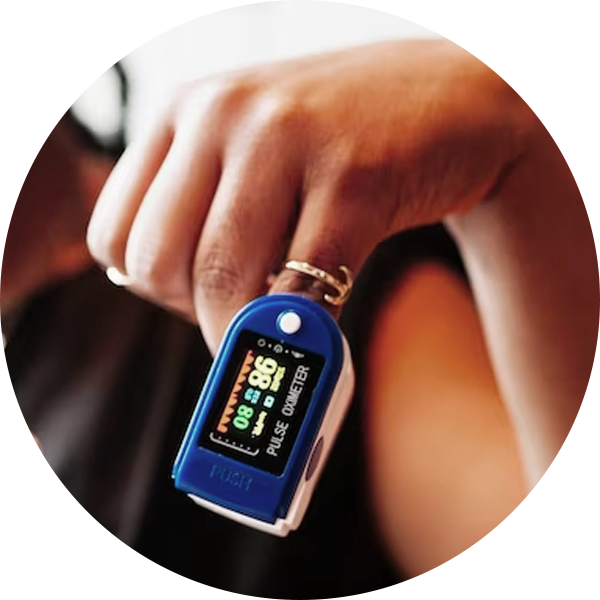
Oxygen Saturation Monitor
Blood transports oxygen all around your body, delivering it to cells that use it for energy. A molecule in red blood cells called hemoglobin is used to hold the oxygen.
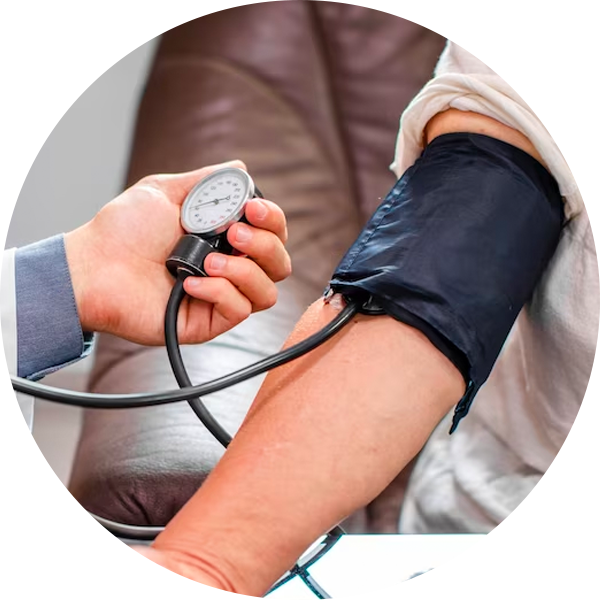
Blood Pressure
To make its way around your body, blood needs to be at a high enough pressure so that it can flow through the arteries to the smaller blood vessels away from the heart. Like everything in the body, it must be at the right balance.

Sleep Apnea
Sleep is important for maintaining our health, allowing our body and brain to rest and process information from the day. A good night’s sleep happens in cycles, where we drift off from a lighter stage of sleep to deeper stages.
Getting started with CardiacSense
Playlist
Need help?


